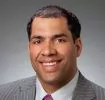The Airport Cooperative Research Program (ACRP) recently released Report 151: Developing a Business Case for Renewable Energy at Airports (the Report). Foley partner David Bannard is a co-author of the Report, assisting lead investigators, Stephen Barrett and Philip DeVita of HMMH. The Report is a companion to ACRP Report 141: Renewable Energy as an Airport Revenue Source, on which Mr. Bannard also served as a co-author with Mr. Barrett.
The Report provides a comprehensive guide to developing a business case for renewable energy projects at airports, and can be applied in other spheres as well. It includes chapters describing a renewable energy business case, the basis of a business case, evaluation criteria and ranking methodology, integrating projects with planning and decision making and engaging internal and external stakeholders. It reviews a model business case, provides examples of business cases, in both airport and non-airport contexts, and concludes with information regarding funding methods for renewable energy projects. The Report also includes several useful appendices, including a sample request for proposals and a sample power purchase agreement.
The business case for developing renewable energy projects at airports goes well beyond simply meeting state or local energy policy goals or "being green" – tangible benefits can include price certainty, the ability to ensure operations even when connections to the local grid are temporarily severed, and the ability to smooth spikes in energy prices due to peak period pricing.
The Report can be obtained from Foley's website here or from the ACRP's website here. If you are interested in learning more about how renewable energy projects can enhance an airport's business goals or how to integrate such projects into an overall airport capital improvement program, please contact David Bannard at dbannard@foley.com.
The content of this article is intended to provide a general guide to the subject matter. Specialist advice should be sought about your specific circumstances.



